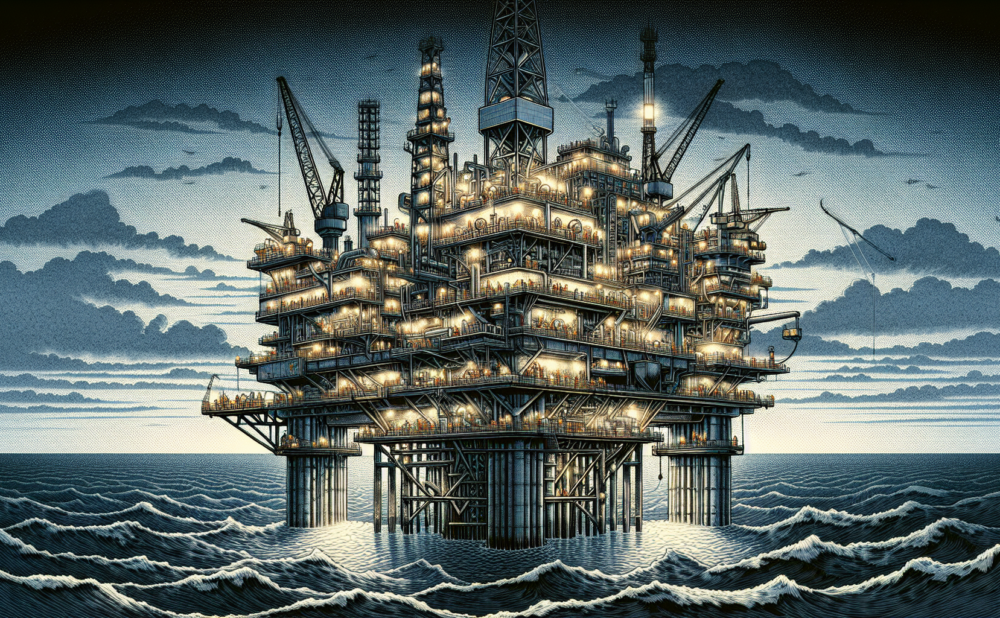Oil rig explosions are big. They have long term consequences. This article answers the big questions: What causes them? What happens to workers and the environment? What has the industry done to make it safer? Expect a no holds barred look at past disasters and what’s being done to prevent future ones.
Takeaways
- Oil rig explosions are big disasters with human loss, environmental damage and potential legal and financial fallout, with the Gulf of Mexico’s Deepwater Horizon being one of the worst.
-
The critical failures that lead to these explosions are mechanical and equipment failure, human error and inadequate safety protocols. so we need better safety, more maintenance and stricter standards in the industry.
-
After an oil rig disaster, improving regulations, holding companies accountable through the courts and addressing the long term environmental impact are the big challenges, along with providing immediate medical help and robust emergency response plans for workers.
Oil Rig Explosions: The Catastrophic Events
Despite being the backbone of the global economy, the oil and gas industry, including natural gas, is full of risks. Oil rig explosions with their potential to cause life changing injuries, tragic loss of life and financial ruin are a stark reminder of the dangers faced by oil rig workers, including offshore oil rig workers. 23 oil rig disasters in the last decade alone, each one a story of human frailty and the cost of energy.
One example is the tragic sinking of the Ocean Ranger, a mobile offshore drilling rig, off Canada in February 1982. The rig was drilling an exploration well for Mobil Oil of Canada when it encountered bad weather and sank with all 84 crew on board.
Every disaster makes the oil industry believe ‘all accidents are preventable’ and there’s a period of soul searching and reform.
Deepwater Horizon
The Deepwater Horizon disaster is the most infamous oil rig explosion. It’s the one that’s seared into our collective memory for its size and human cost. The initial explosion on the drilling rig killed 11 oil rig workers and released the largest oil spill in history with 3.2 million barrels of crude oil into the Gulf of Mexico.
Even as BP engineers were warning about equipment failure. The disaster happened and an enormous fire at sea and oil on the ocean floor which will be an environmental problem for years to come.
Other Rig Disasters
While Deepwater Horizon is the biggest, it’s not the only disaster to hit the oil industry. Other oil rig disasters like the Ocean Ranger mobile offshore drilling rig disaster have been just as devastating. The Ocean Ranger disaster killed all 84 crew when a rogue wave hit the rig off Canada. The cold Atlantic was unforgiving and most died from drowning or hypothermia.
Another tragic accident was the Alexander L. Kielland rig disaster where a 6mm wide fatigue crack from a bad weld killed 123 men. This disaster brought in a raft of new safety regulations including improved lifeboat hooks and command structures, the industry’s reactive approach to safety.
Oil Rig Explosion Anatomy
Drilling rigs are complex and the substances they extract are volatile, a recipe for disaster. Oil rig explosions are often a combination of human error, equipment failure and sometimes just bad luck. From a spark igniting flammable gases to blowouts caused by catastrophic pressure control system failures, each explosion has a story of ignored warning signs, structural failure and sometimes non standard industry practices.
Drilling Rig Mechanics and Blowout Preventers
At the centre of drilling is the delicate balance between formation pressure and mud pressure, a balance maintained by the rig mechanics and the blowout preventer. These blowout preventers (BOPs) are the rig’s first line of defence against blowouts and uncontrolled gas production. Technological advances like remote controlled BOPs have improved safety but even with that, failures do happen. Like an Iraqi rig where a valve failed and the drilling mud and toxic gas was released.
Corroded pipes, broken machinery and damaged cables can all be precursors to disaster, so maintenance and supervision is key.
Human Error and Equipment Failure
Mechanical failure is not the only culprit in oil rig disasters. Human error is often the main cause of many of these. From the Petrobras P-36 platform to the Mumbai High North platform, human mistakes have killed many. Whether it’s ignoring safety concerns, communication errors or systemic management failures like the Deepwater Horizon final report, human factor can’t be ignored.
It’s a harsh reality that even the best safety systems are useless without protocols and awareness.
Safety Measures and Regulations After Disasters
After disasters the oil industry is at a crossroads, faced with the daunting task of reworking safety measures and regulations. The creation of the Bureau of Safety and Environmental Enforcement (BSEE) and the revision of federal regulations for offshore drilling rigs is proof the industry is trying to improve safety compliance and reduce the chance of future disasters.
The need for safety and environmental management programs and oil companies to take corrective action based on accident findings shows the industry is taking proactive steps to protect workers and the environment.
Offshore Drilling Safety
While progress is incremental the oil and gas industry has made big strides. The Alexander L. Kielland rig disaster was a trigger for changes in lifeboat hook designs and command structures to allow for faster and more efficient evacuations. But negligence still is an issue, incidents are often caused by improper equipment installation, inadequate maintenance and insufficient safety training.
These are areas to focus on for further safety improvements.
Legal Ramifications and Accountability
While safety is key, holding people accountable is just as important after an oil rig disaster. Victims and their families often find themselves in a complex legal environment to get compensation for medical claims, economic harm and punitive damages. High stakes lawsuits like the wrongful death claim after the Patterson 219 oil rig fire have resulted in big awards for the affected families. But settlements like the Deepwater Horizon oil spill have been criticized for not compensating workers enough for their health problems.
These lawsuits show the difficulties in proving causation between worker illnesses and exposure to hazardous substances.
Oil Rig Explosions Impact on Workers and Environment
The effects of an oil rig explosion spread to the lives of workers and the environment around the disaster area. For workers personally they are left to deal with severe injuries like burns or blunt force trauma that can be life changing. Statistically almost 15% of the fatalities in the Oil, Gas and Extractive industry between 2014 and 2019 were due to explosions.
The environmental impact is just as bad, oil spills and fires cause long term damage to marine ecosystems and coastal areas.
Rescue and Recovery Challenges
The immediate aftermath of an oil rig explosion presents many challenges for rescue and recovery. Workers trained in medical response are often the first responders, providing first aid to their injured coworkers while waiting for professional rescue teams.
Their readiness and quick action can mean life or death, so training and emergency preparedness is key.
Long Term Environmental Damage
Oil rig explosions have environmental impacts that go beyond the immediate aftermath of the event. Some of the impacts are:
- PAHs released into the marine environment from an oil spill which can cause serious health problems to marine life, including cardiac issues.
-
Increased fish lesions and sores.
-
Massive bird deaths, like after the Deepwater Horizon.
These are just a few of the many long term effects of oil rig explosions on wildlife.
These environmental disasters are a reminder of the fine line between industrial activity and environmental protection.
When Disaster Hits: What to do after an Oil Rig Explosion
In the aftermath of an oil rig explosion the first 24 hours are crucial. Getting medical treatment for the injured is the top priority.
Next is to report the accident to the employer and get legal help, which can be a lifeline for those affected.
Emergency Procedures and Evacuation Protocols
For oil rig workers emergency procedures and evacuation protocols are key. Investments in training programs have resulted to a workforce that is better equipped to handle emergencies, with procedures for shutting down equipment, sounding alarms and executing escape plans.
Being able to quickly assess and respond to hazards like active fires or chemical exposure is critical to keeping workers safe during a crisis.
Get Legal Help
After an oil rig explosion understanding the complexities of your compensation claim can be overwhelming. Maritime laws like the Jones Act and the Death on the High Seas Act (DOHSA) provide avenues for injured workers and families of the deceased to seek justice. Consult with attorneys who specialize in oil industry accidents to know all your options for compensation, from workers’ comp to personal injury lawsuits.
Conclusion
We’ve navigated the oil rig explosion world and seen the human side, the technology and the risk. From the Deepwater Horizon and other oil rig disasters to the mechanics of drilling we’ve seen the complexity of these events. Safety measures and regulations have evolved and legal systems have been tested to hold people accountable and get justice. But the cost is paid by the workers who face the hazards and the environment that suffers the aftermath. As we look back on these stories let’s remember to stay vigilant, have high safety standards and learn from the past to protect our future.
FAQs
What was the biggest oil spill in maritime history caused by an oil rig explosion?
The biggest oil spill in maritime history was caused by the Deepwater Horizon explosion and released 3.2 million barrels of crude oil into the Gulf of Mexico.
What are blowout preventers and how do they work?
Blowout preventers (BOPs) are safety devices on oil rigs that seal, control and monitor wells to prevent blowouts by maintaining pressure balance. They are used in drilling operations.
What are the legal options for oil rig workers injured in an explosion?
Injured oil rig workers have options like workers’ comp, personal injury lawsuits, the Jones Act and the Death on the High Seas Act. Get legal advice to know what to do.
How do oil rig explosions affect marine life?
Oil rig explosions can harm marine life, cardiac problems in marine animals, increased rates of lesions and sores in fish, mass bird fatalities due to oil spills releasing PAHs into the marine environment. It’s a big environmental issue.
What changes were made after oil rig disasters?
New lifeboat hooks, command structures for evacuations, creation of the Bureau of Safety and Environmental Enforcement (BSEE) and new federal regulations for offshore drilling rigs.







